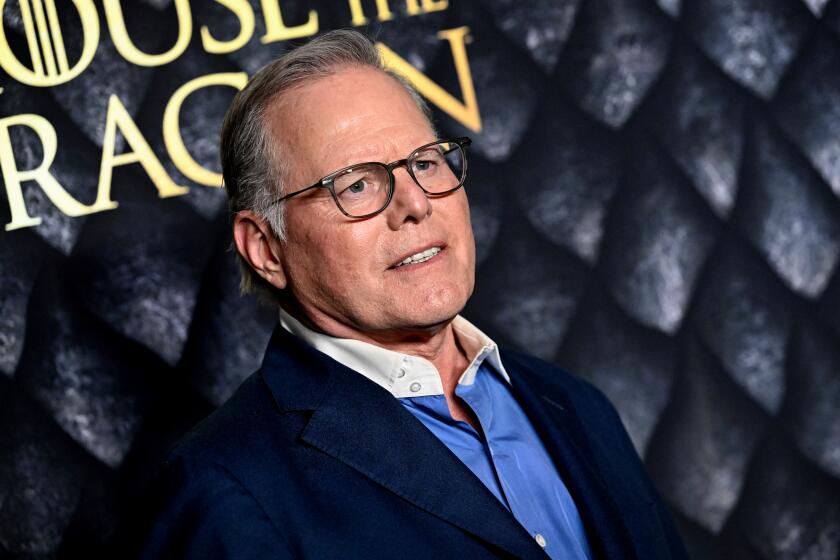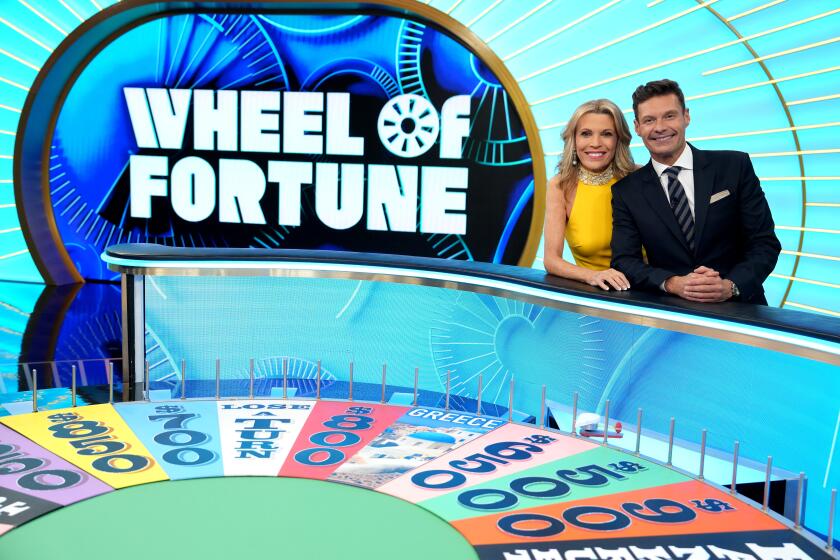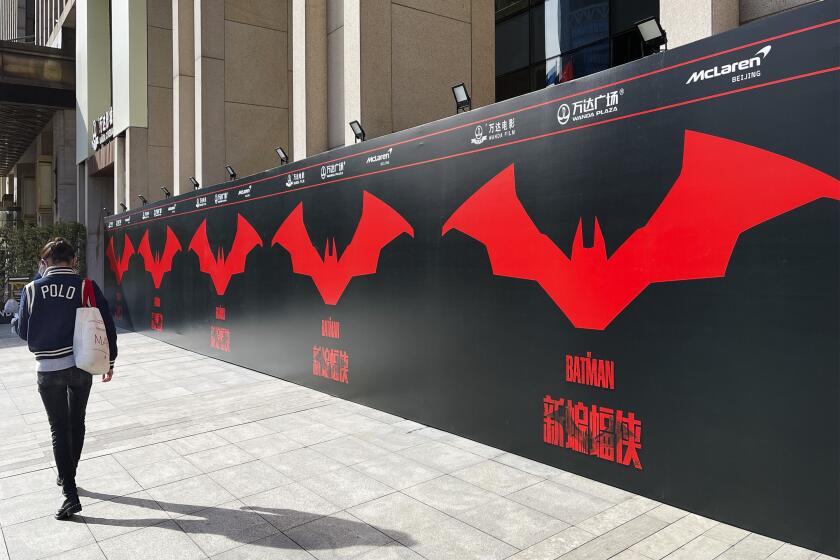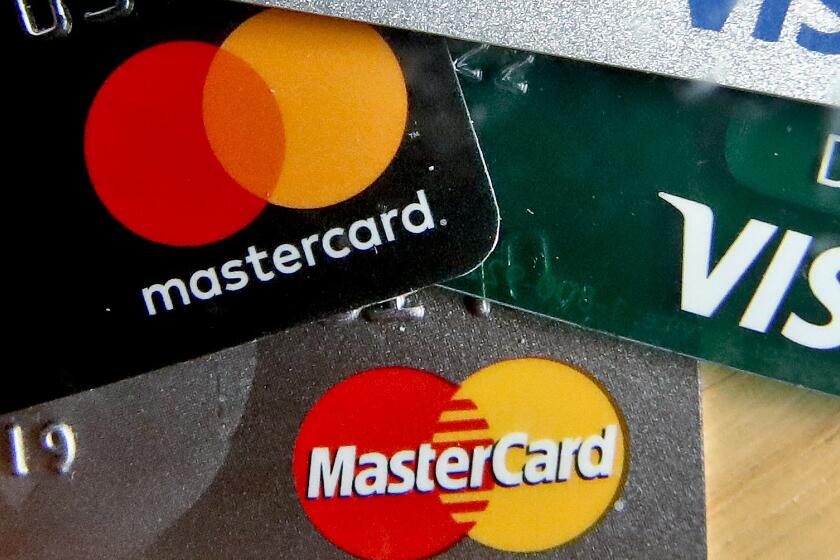Why Netflix is looking to India and a curious baby called Bheem to expand its user numbers abroad
- Share via
SAN FRANCISCO — When Netflix plunged into India’s vast market with its first original animated kids series in April, it turned to a curious baby known as Bheem who crawls through his rural village overcoming challenges to nab the perfect white flower to complement his mom’s purple sari.
Company executives anticipated that “Mighty Little Bheem” would be embraced by Indian audiences, but they were pleasantly surprised when the series targeting preschoolers took off worldwide, becoming the second most popular original kids program to launch on Netflix after DreamWorks Animation’s “The Boss Baby: Back in Business.”
Encouraged by the success, the streaming giant is doubling down on international animated originals from India and other countries. “Mighty Little Bheem,” created by Hyderabad-based Green Gold Animation, will unveil its second season this week. And on Monday, Netflix announced that it had greenlighted a third season.
The series, which is being distributed and financed by Netflix, is part of the company’s larger push to support international animators as it adds subscribers globally, especially in large and emerging markets like India.
“As we become more and more global, we really want that content to reflect the global nature of Netflix, and we’re finding the best way to do that is to empower creators all over the world to make the show that they wish their children could grow up watching,” said Melissa Cobb, vice president of original animation for Netflix.
Other international animated originals coming to Netflix include “Dino Girl Gauko” from Japan, “The Nutty Boy” from Brazil and the Zambian story “Mama K’s Team 4.”
The effort comes at a time when Netflix is facing a domestic slowdown in subscribers, as more streaming competitors enter the market. Research firm eMarketer estimates that Netflix will see a drop in its market share this year, capturing 87% of U.S. consumers who pay to stream video on the internet, down from 90% in 2014. By 2023, Netflix’s market share will drop to about 86% as Hulu and Amazon gain more business, according to eMarketer’s estimates.
“It’s a sign of more competition,” said eMarketer analyst Ross Benes. For Netflix to continue to expand its audience, “that growth is going to have to start coming increasingly from other countries,” he said.
Last quarter, Netflix reported a decline of 126,000 U.S. subscribers, its most notable quarterly shortfall since 2011. In addition, Netflix’s total number of paid subscribers fell short of the company’s original forecast of 153.9 million. Instead, the total number was 151.6 million last quarter. Contributing to the domestic decline was the mix of shows and films, as well as Netflix raising prices earlier this year to help pay for more original content.
More competitors will also enter the market later this year, including streaming services Disney+ and Apple TV+.
And pressure has been building on the Los Gatos company to expand its library with new original content as media companies pull their popular shows like “The Office” and “Friends” from Netflix and place them on their own streaming services.
Enter Green Gold Animation, which already had a popular animated series in India, “Chhota Bheem,” about a young boy who has extraordinary strength and lives in a rural Indian village in the fictional kingdom of Dholakpur.
Green Gold wanted to find a way to reach international audiences, and Netflix wanted to expand its reach in India.
For years, Green Gold tried to reach out to international TV stations to get its content aired, but the company couldn’t get any traction, said founder and Chief Executive Rajiv Chilaka.
“They just decided that this won’t work for my audience,” Chilaka said. “‘Your storytelling is different. This is something our kids would not watch,’” he said he was told.
But the company found a willing partner in Netflix, whose executive first met with Chilaka in 2016.
Netflix wanted to create a show with Green Gold and felt that there was lack of preschool content in India.
While the streaming giant sought to increase its reach in India, it was also eager to broaden the appeal of the series globally, so changes were made. The new series would feature Bheem as a baby and scenes were adjusted.
For example, one episode was tweaked so the children were fighting over a ball of yarn instead of a big piece of cake. The concern was the message it would send to children in countries where obesity is a problem, said Marc Lumer, Green Gold’s vice president and head of U.S. operations.
Though the program is distinctly Indian, the absence of dialogue and universal themes such as Bheem’s loving bond with his mother lend it broad cross-cultural appeal. Now, the series is streamed in 190 countries on Netflix. A “Mighty Little Bheem” clip on the Netflix Kids & Family YouTube Channel uploaded in May was the site’s highest performing video, attracting about 80 million views as of July 22.

“The world is becoming a smaller place,” Chilaka said. “We realized that we needed to find the right platform to access this kind of thing and thankfully we’d known Netflix was expanding all over the globe, with an opportunity for a company like ours to showcase our talents.”
Netflix did not disclose financial terms of its partnership or the show’s budget.
“Mighty Little Bheem’s” popularity has given a boost to Green Gold, giving the company exposure to more viewers abroad. It now has more than 1,400 employees with offices in India, Los Angeles, Singapore and the Philippines.
Chilaka was inspired to pursue a career in animation after reading about Walt Disney when he was a graduate student in computer science at the University of Missouri-Kansas City. He became inspired by Disney’s career and launched an animation studio in India out of his house in 2001.
“There is so much potential to do stories which are from India, of Indian stories,” Chilaka said. “Indian kids need a role model. They need to have characters that they can identify themselves with.”
India is a significant market for Netflix, based on its population size of more than 1.3 billion and growing affluence.
The number of Netflix subscribers in India is rapidly increasing, growing from just 1.4 million in 2018 to 4.1 million in 2019, according to research firm IHS Markit. One of its major streaming competitors there is Amazon Prime Video, which continues to best Netflix in the country with 4.4 million subscribers, IHS Markit said.
Part of the issue is that Netflix may be priced too high for some in India. The annual cost of Amazon Prime Video in India is about $14. That’s roughly the cost of two months of Netflix, said Jun Wen Woo, a senior analyst of video and mobile media with IHS Markit. Even pay TV in India can be cheaper than Netflix, she added. With that in mind, Netflix has launched a new lower-priced tier in India, that costs about $3 a month for people who view Netflix only on mobile devices.
“It’s a huge priority, India,” Cobb said, adding that in India, many families like to watch entertainment together. That’s a trend reflected globally across Netflix, with nearly 60% of subscribers watching family content each month.
Part of that content includes shows like “Mighty Little Bheem,” which has episodes that are around six minutes long. Parents and kids can binge an extra episode together without delaying bedtime for too long. The third season will include 15 episodes as well as two holiday specials.
“We want the family to be able to go to Netflix for all of their viewing needs, so that everybody could have their favorite show on Netflix,” Cobb said. “We try to focus in general to the broadest audience, because that’s who is paying for the service, and we want to make sure that they have something to watch that reflects their family dynamics.”
In addition to kid-centric shows, Netflix also has live-action productions in Hindi. The company recently announced five new originals in India, including “Betaal,”a series that pits police against zombie redcoats.
“Growth in that country is a marathon,” Ted Sarandos, Netflix’s chief content officer, said in a presentation to investors in July. “So we’re in it for the long haul, and we’re seeing nice, steady progress.”
Shows that originate in India can also translate well with international audiences. For example, “Mighty Little Bheem” has large followings in the U.S., Brazil and Mexico, among other countries.
“We really hoped that it would connect with audiences in India, and I think the thing that delighted us was discovering what it means for audiences throughout the globe,” Cobb said.
More to Read
Inside the business of entertainment
The Wide Shot brings you news, analysis and insights on everything from streaming wars to production — and what it all means for the future.
You may occasionally receive promotional content from the Los Angeles Times.











